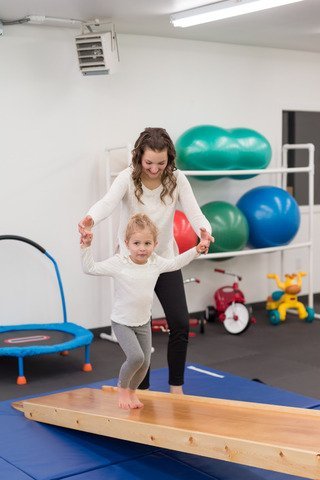
Sensory Avoidance Vs. Sensory Seeking
In the world of occupational therapy, sensory processing plays a vital role in helping individuals navigate their daily lives. Two common sensory patterns—sensory avoidance and sensory seeking—represent opposite ends of the sensory spectrum. Sensory avoidance refers to individuals who are overwhelmed or distressed by certain sensory input, such as bright lights, loud noises, or specific textures. These individuals often withdraw from stimuli, preferring quiet, calm environments. In contrast, sensory seekers actively crave sensory input and may engage in behaviors like touching everything around them, making loud noises, or constantly moving.

Home Exercises for Left Torticollis
Home Exercise for Left Torticollis
Exercises to stretch left sternocleidomastoid muscle with right side-bending, left rotation,
and extension. Please reach out if you have any questions.

Ways to Promote Gross Motor Skills in the Summer

A Guide to Infant Physical Therapy

Sports Specialization: How to Decrease Risk and Increase Reward

Pediatric Shoe Recommendations

5 Fun Activities to Promote Gross Motor Skills with Toddler
Why would a child need physical therapy?
What kinds of treatment will my child get in physical therapy?

What goals might my child with CP work on?

Toe walking in children

What is torticollis?

Physical developmental stages

How to stop toe walking

What is hypotonia?

When to start tummy time

Developmental coordination disorder

Autism and physical therapy

What is muscle spasticity?


